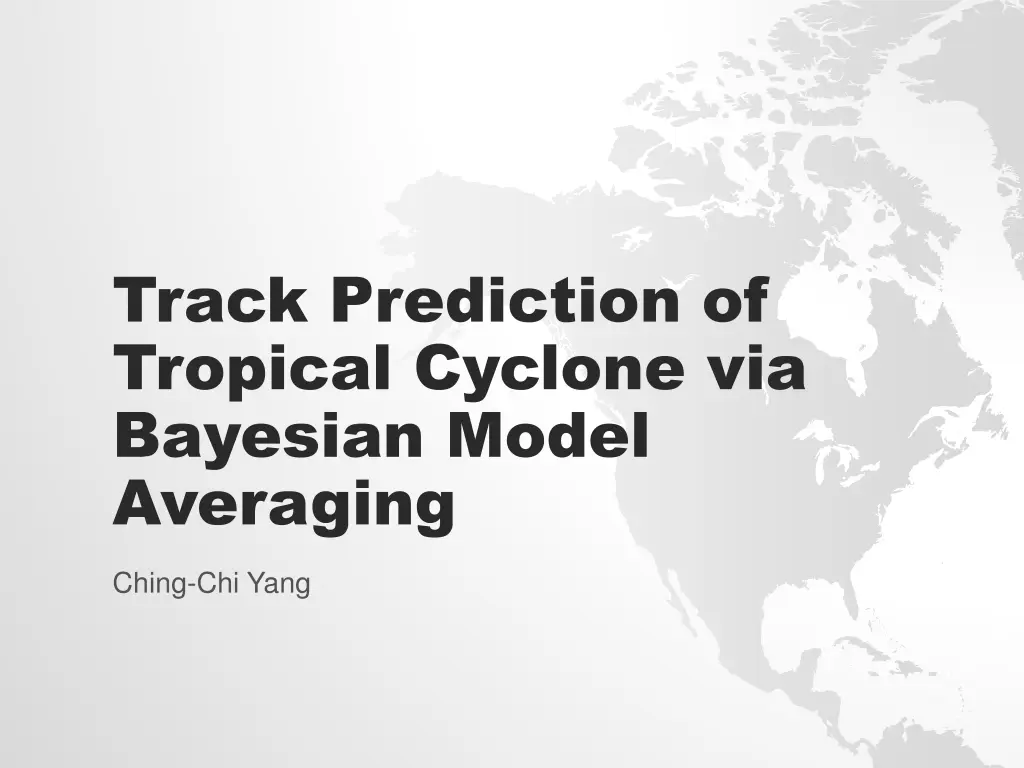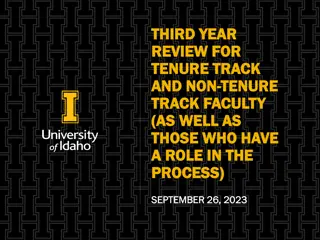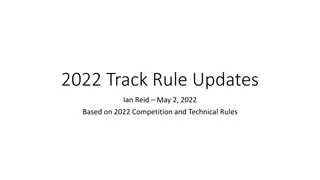
Tropical Cyclone Bayesian Model Averaging Prediction
Explore the prediction of tropical cyclone tracks via Bayesian Model Averaging by Ching-Chi Yang. Discover the methodology, results, and implications for improving track error accuracy and forecasting reliability over the years. Assess the performance of different models and learn why BMA is highly recommended for track predictions across various scenarios.
Download Presentation

Please find below an Image/Link to download the presentation.
The content on the website is provided AS IS for your information and personal use only. It may not be sold, licensed, or shared on other websites without obtaining consent from the author. If you encounter any issues during the download, it is possible that the publisher has removed the file from their server.
You are allowed to download the files provided on this website for personal or commercial use, subject to the condition that they are used lawfully. All files are the property of their respective owners.
The content on the website is provided AS IS for your information and personal use only. It may not be sold, licensed, or shared on other websites without obtaining consent from the author.
E N D
Presentation Transcript
Track Prediction of Tropical Cyclone via Bayesian Model Averaging Ching-Chi Yang
Outline Background Problem formulation Bayesian Model Averaging Results
TROPICAL CYCLONE TROPICAL CYCLONE TRACKS TRACKS For example, where will the center of hurricane move to after 48 hrs.?
Tropical cyclones track prediction M1 M2 M3
Average: equal weights (Dong and Zhang 2016) M1 M2 New M3
Problem formulation Given performance of the past forecasting, could we provide a more accurate prediction? Track error: the distance from the predicted location to the actual location Evaluate track errors over a year: 1. annual mean absolute errors (MAE) 2. annual root-mean-square errors (RMSE)
Example: Average (2016) MAE RMSE
Bayesian Model Averaging A distribution which combines the opinions of models. A weighted averaged of posterior distributions of models. Model selection.
Result in 2017 MAE
Result in 2016 MAE
Result in 2015 MAE
Conclusion 72-hr predictions: BMA is highly recommended cross all models. BMA outperforms NHC. BMA performs better than Average. UK Met Office are better for 120-hr predictions in 2015.
Bayesian Model Averaging 4 P y = ? ??? y|?? ?=1 Where ? is the location, and ?? s are models. ? ?? s will be treated as weights ?? s.
Example for working trough BMA Let s focus on the 48-hr prediction first. Model YYMMDDHH UK 14070200 GFS 14070200 ECMWF 14070200 HWRF 14070200 ... Ptime 14070400 -77.2 33.4 -77.3 34.0 14070400 -77.3 33.5 -77.3 34.0 14070400 -77.8 32.6 -77.3 34.0 14070400 -78.1 33.5 -77.3 34.0 ... ... PLat PLon VLat VLon ... ... ... The entire history up to the current stage, say, 2015/05/08 12:00 (total 42 cases)
Conditional probability ? y|?? Where ? is the predicted location, (???,???), and ?? The mode of the distribution is provided by model ?. The spread/distribution is unknown. s are models.
Bayesian Model Averaging 4 P y = ? ??? y|?? ?=1 Where ? is the location, and ?? s are models. ? ?? s will be treated as weights ?? s.
Joint probability 42 42 4 P y1,y2, ,y42 = ?(??) = ??? yi|?? ?=1 ?=1 ?=1 ? 1 1? ? 2? ? j Gaussian distributed ?=1 42 ?=1 4 ?? 2? j
Technical details The collected locations are treated as realizations from the normal distribution. The dispersion can be depended on model, e.g., t|?? ~? ??,?, j. After our investigation, j s do not differ significantly; assume = 1= 2= 3= 4.





















